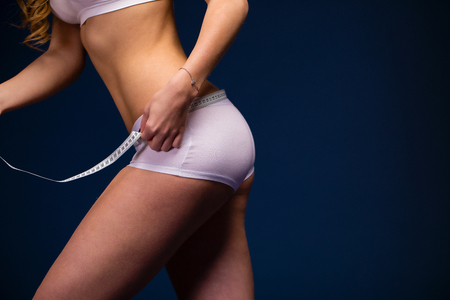Introduction to Body Contouring and Fat Reduction
In recent years, the UK has witnessed a remarkable surge in the popularity of body contouring and fat reduction treatments. As lifestyles become busier and social standards around appearance evolve, more Britons are turning to non-surgical aesthetic solutions to help them achieve their desired look. The allure of these treatments lies not only in their ability to target stubborn fat and reshape the body without invasive surgery, but also in their minimal downtime and discreet recovery. With an increasing focus on self-confidence and personal wellbeing, it’s no wonder that people across the country are seeking innovative ways to address concerns such as cellulite. The demand for safe, effective, and convenient options continues to grow, as individuals look for science-backed methods that support their goals while fitting seamlessly into modern British life.
The Science of Cellulite: What Causes It?
Cellulite is a term that many in the UK are all too familiar with, yet its causes are often misunderstood. Scientifically speaking, cellulite forms when fat deposits push through the connective tissue beneath the skin, resulting in the classic dimpled or “orange peel” appearance. While it’s entirely natural and experienced by people of all shapes and sizes, certain biological and lifestyle factors can make cellulite more noticeable or persistent.
Biological Factors
The structure of our skin and connective tissue plays a crucial role in cellulite development. Genetics are a significant factor; if your family members experience cellulite, you’re more likely to notice it too. Hormonal changes—particularly those involving oestrogen—affect how fat is distributed in the body, making women more susceptible than men. Ageing also leads to a decrease in skin elasticity and thinning of the dermis, which further accentuates cellulite.
Key Biological Contributors
| Factor | Impact on Cellulite |
|---|---|
| Genetics | Influences fat distribution and skin structure |
| Hormones | Affects fat storage and collagen production |
| Ageing | Reduces skin firmness and thickness |
Lifestyle Influences in the UK Context
Your daily habits also play a part. Diets high in processed foods, salt, and sugar can contribute to increased fat deposits and water retention, both of which highlight cellulite. A sedentary lifestyle is another common culprit; lack of movement reduces blood circulation and lymphatic drainage, making cellulite more prominent. In the UK, where colder weather might discourage outdoor activity for much of the year, these lifestyle influences can be particularly relevant.
Common Lifestyle Contributors Among Britons:
| Lifestyle Factor | Description | Potential Effect on Cellulite |
|---|---|---|
| Poor diet | High intake of fatty or processed foods | Increased fat storage under the skin |
| Lack of exercise | Sedentary routines due to work or weather | Poor circulation and reduced muscle tone |
| Smoking & Alcohol Consumption | Common social habits in the UK context | Deteriorates skin health and elasticity |
| Stress & Lack of Sleep | Busy urban lifestyles or irregular schedules | Affects hormone balance and tissue repair |
Together, these biological predispositions and lifestyle choices explain why cellulite remains such a persistent concern for so many people across the UK. Understanding these root causes is not just empowering—it’s the first step towards making informed decisions about prevention and treatment options tailored to your unique needs.

3. Popular Body Contouring Treatments in the UK
Across the UK, non-surgical body contouring and fat reduction treatments have soared in popularity, offering effective options for those seeking to tackle stubborn cellulite without the need for invasive procedures. The British market has embraced a range of advanced technologies, each with its unique mechanism and benefits. One of the most sought-after treatments is cryolipolysis, commonly known as ‘fat freezing’. This method uses controlled cooling to target and destroy fat cells, which are then naturally eliminated by the body over time. Brands like CoolSculpting and Clatuu have become household names in clinics from London to Edinburgh, providing clients with tailored solutions for common problem areas.
Radiofrequency (RF) therapies have also made significant strides across the UK. This technology utilises radio waves to heat the deeper layers of skin, stimulating collagen production while simultaneously breaking down fatty deposits. Treatments such as BTL Exilis and Venus Legacy are particularly favoured for their dual action—smoothing out dimpled skin texture and improving firmness, making them ideal for addressing both fat reduction and visible cellulite.
Ultrasound-based therapies present another innovative option widely available in British aesthetic clinics. These treatments use focused ultrasound energy to disrupt fat cell membranes beneath the skin’s surface. Renowned systems like Lipofirm Pro and Ultraformer III offer not only fat reduction but also skin tightening benefits, with many clients noticing improvements in both contour and tone after just a few sessions.
It’s worth noting that several UK-specific technologies and brands have emerged to cater to local preferences and standards. For example, 3D-Lipo is a home-grown brand that combines multiple modalities—such as ultrasound cavitation, RF, and cryolipolysis—in one platform, providing bespoke treatment plans tailored to individual needs. British clinics often pride themselves on rigorous safety standards and personalised consultations, ensuring that every client receives expert guidance suited to their unique body goals.
Ultimately, these non-invasive body contouring treatments are designed with British lifestyles in mind—offering minimal downtime, discreet appointments, and results that empower individuals to feel more confident in their own skin. Whether you’re based in bustling city centres or quieter rural areas, access to scientifically backed fat reduction therapies has never been more convenient or culturally relevant throughout the UK.
4. How These Treatments Tackle Fat and Cellulite
Understanding how body contouring and fat reduction treatments actually work can feel a bit like deciphering a science lesson, but let’s break it down into everyday British terms. Imagine your stubborn fat as a block of butter that just won’t melt in the usual way, no matter how many brisk walks you take around Hyde Park or how many cups of builder’s tea you swap for green tea. Each treatment uses its own clever mechanism to target these “butter blocks” and those dimples we know as cellulite.
Popular Treatments and Their Mechanisms
| Treatment Type | How It Works (Analogy) | UK Perspective on Results |
|---|---|---|
| Cryolipolysis (Fat Freezing) | Think of placing butter in the fridge: the cold targets fat cells, causing them to crystallise and break down over time. | Expect gradual slimming – perfect for prepping ahead of summer holidays to Cornwall or Brighton. |
| Radiofrequency (RF) Therapy | Like warming butter with gentle heat: RF energy heats up skin layers, tightening tissue and reducing fat cells. | Often chosen for subtle, natural-looking results – ideal for those who want a discreet transformation. |
| Ultrasound Cavitation | Imagine shaking a bottle of milk until the fat separates: sound waves disrupt fat cells so they’re flushed away by your body. | A popular lunchtime procedure, fitting neatly into busy UK workdays without downtime. |
| Laser Lipolysis | Picture using a low-heat hairdryer to soften stubborn butter: lasers liquefy fat cells which are then naturally removed by your system. | Favoured by those seeking targeted results before big events like weddings or Ascot races. |
The Science Behind Cellulite Reduction
Cellulite is a common concern across the UK – from London to Leeds, it doesn’t discriminate. Most treatments approach cellulite by strengthening connective tissues and improving local circulation. For example, radiofrequency not only targets fat but also stimulates collagen production, leading to smoother, firmer skin. This is akin to re-fluffing a well-loved sofa cushion so it looks refreshed and inviting again. Remember, while these treatments offer visible improvements, they are best viewed as part of a holistic approach including balanced nutrition and regular activity – think of them as your supportive teammate rather than a magic wand. With realistic expectations rooted in UK clinical standards, many find their confidence gently boosted as their silhouette becomes sleeker and skin texture improves.
5. Safety, Effectiveness, and What to Expect
When considering body contouring and fat reduction treatments in the UK, it’s only natural to have questions about safety, effectiveness, and what your journey will look like. British clinics operate under rigorous regulations set by bodies such as the Care Quality Commission (CQC), ensuring that patient safety is always front and centre. Treatments like cryolipolysis and radiofrequency are non-surgical and typically involve minimal downtime, with side effects usually limited to temporary redness, mild swelling, or tingling sensations. It’s important to choose a practitioner who is properly trained and registered with reputable organisations—this is not just a legal requirement but also your assurance of high standards.
Clinical Effectiveness: Real Results, Realistic Expectations
The science behind these treatments is robust—multiple clinical studies show measurable improvements in skin texture and fat reduction. However, it’s essential to remember that results vary from person to person and are rarely instantaneous. Most people notice gradual changes over several weeks following their treatment, with the best outcomes achieved through a series of sessions combined with healthy lifestyle choices. British practitioners pride themselves on offering honest advice—don’t hesitate to ask for before-and-after photos or evidence of results during your consultation.
Your Recovery Journey
One of the key advantages of non-invasive body contouring is the swift recovery time. Unlike surgical options, there’s no need for lengthy downtime; most clients can return to daily activities straight away. That said, your provider will give you tailored aftercare advice based on your treatment type—always follow these guidelines closely for optimal results and comfort.
Confidence Through Informed Choices
Above all, the goal of body contouring isn’t about chasing perfection—it’s about feeling confident and comfortable in your own skin. UK professionals encourage patients to make informed choices grounded in realistic expectations. Celebrate every improvement and remember: true confidence stems from self-acceptance as much as any treatment result. If you’re ready to take the next step, seek out a reputable clinic that values both your safety and your journey towards authentic self-confidence.
6. Embracing Body Confidence: A UK Perspective
In the UK, cultural attitudes towards body image are evolving, with an increasing emphasis on embracing individuality and nurturing self-confidence. While advanced body contouring and fat reduction treatments offer effective solutions for managing cellulite and sculpting your silhouette, it is essential to approach these options with a balanced mindset. True body confidence comes from accepting and appreciating your unique form, not simply striving for perfection. The British value of “being comfortable in your own skin” encourages us to celebrate our differences and prioritise well-being over unrealistic standards.
Balancing Aesthetics with Self-Acceptance
Opting for aesthetic treatments can be an empowering choice when it aligns with personal goals and self-care rather than societal pressures. Many in the UK now view such treatments as enhancements—not necessities—and understand that self-worth is not dictated by appearance alone. It’s important to remember that body contouring procedures are most rewarding when they complement a positive self-image and a healthy lifestyle.
Cultivating a Supportive Community
The UK’s inclusive approach to beauty champions authenticity and support. Whether you’re considering treatment or simply seeking to feel better in your skin, sharing experiences with friends, family, or local support groups can foster motivation and perspective. This open dialogue helps challenge stereotypes and reinforces that everyone’s journey is valid.
Your Confidence Journey
Ultimately, choosing body contouring or fat reduction is a personal decision—one best made with confidence and care. As you explore these options within the context of British culture, let your choices reflect both self-respect and a desire for well-being. Remember: true beauty shines brightest when paired with self-assurance, kindness, and the courage to embrace yourself just as you are.

